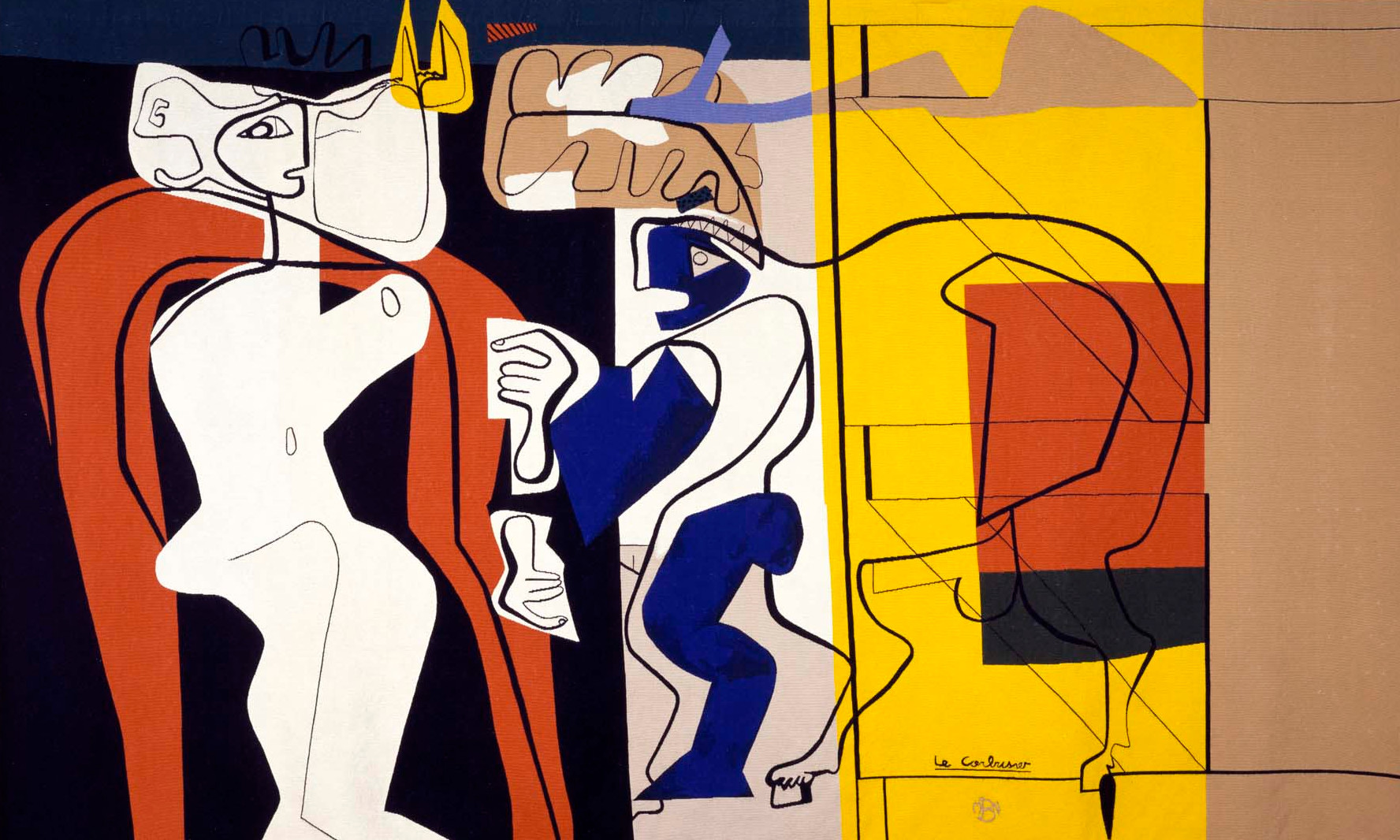Mid-Century Design
 Charles-Edouard Jeanneret, known as Le Corbusier, La femme et la maréchal ferrant (The Woman and the Farrier), designed 1958, woven January 23–August 10,1967, cotton and wool. Mobilier national, Paris, France, BV 149, © F.L.C. / ADAGP, Paris / Artists Rights Society (ARS), New York. Photo: Isabelle Bideau
Charles-Edouard Jeanneret, known as Le Corbusier, La femme et la maréchal ferrant (The Woman and the Farrier), designed 1958, woven January 23–August 10,1967, cotton and wool. Mobilier national, Paris, France, BV 149, © F.L.C. / ADAGP, Paris / Artists Rights Society (ARS), New York. Photo: Isabelle BideauIn the late 1950s and 1960s collaborations between weaving workshops and contemporary artists continued and intensified. The production of large-scale tapestry for use in modernist architectural spaces was promoted by Charles-Édouard Jeanneret, the architect who adopted the moniker Le Corbusier. In 1952 he invented the word “muralnomad” for tapestry, corresponding to his concept of the nature of modern life in which people moved homes frequently. For Le Corbusier, tapestry was the perfect form of interior decoration; it could command a large space but also easily be taken down, rolled up, and moved to new locations. Tapestry could also add visual interest, through texture, color, and line, to otherwise spare surroundings and assist with acoustics. According to Le Corbusier, to be effective in modern buildings, tapestry had to be large and wall-like, extending nearly from floor to ceiling and with a commensurate width. Le Corbusier’s ideas about tapestry and its role in architecture would come to be very influential, and contemporary tapestry became frequently used for interior decoration in new buildings around the world.
Many artists who worked primarily in painting or other media also designed works to be made in tapestry. Dealers and other agents saw the possibilities of the market for tapestry and sought permission from artists or their estates to have pre-existing images woven into tapestry. The national tapestry factories were active in recruiting leading artists to provide designs, offering expertise and assistance in translating the artist’s typical painting or sculptural style into this medium.
